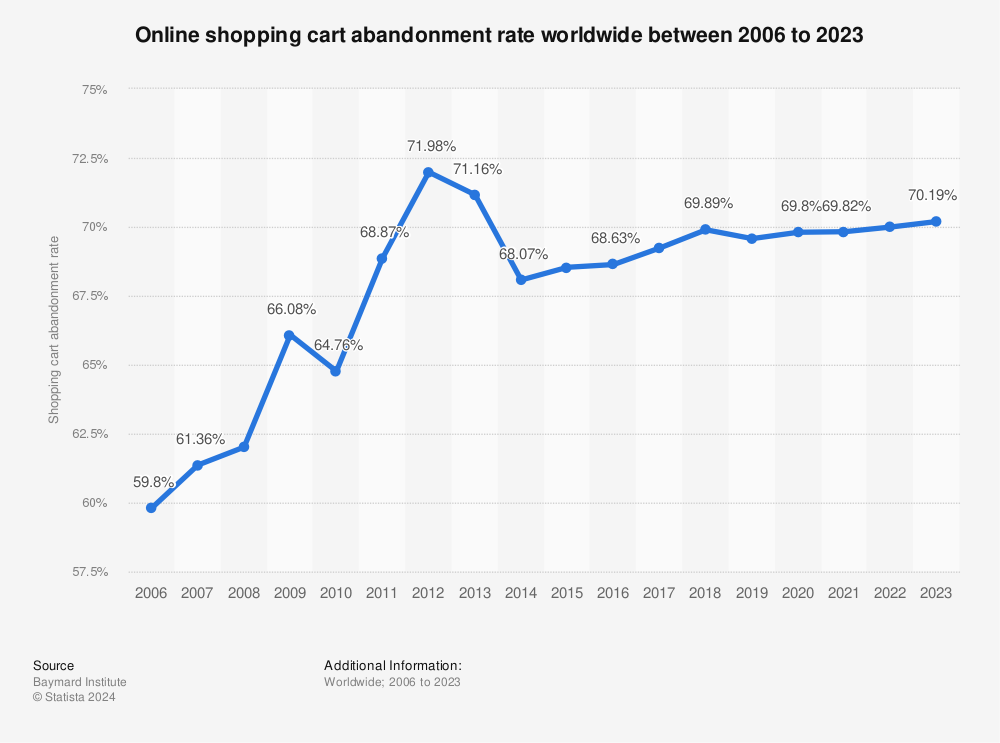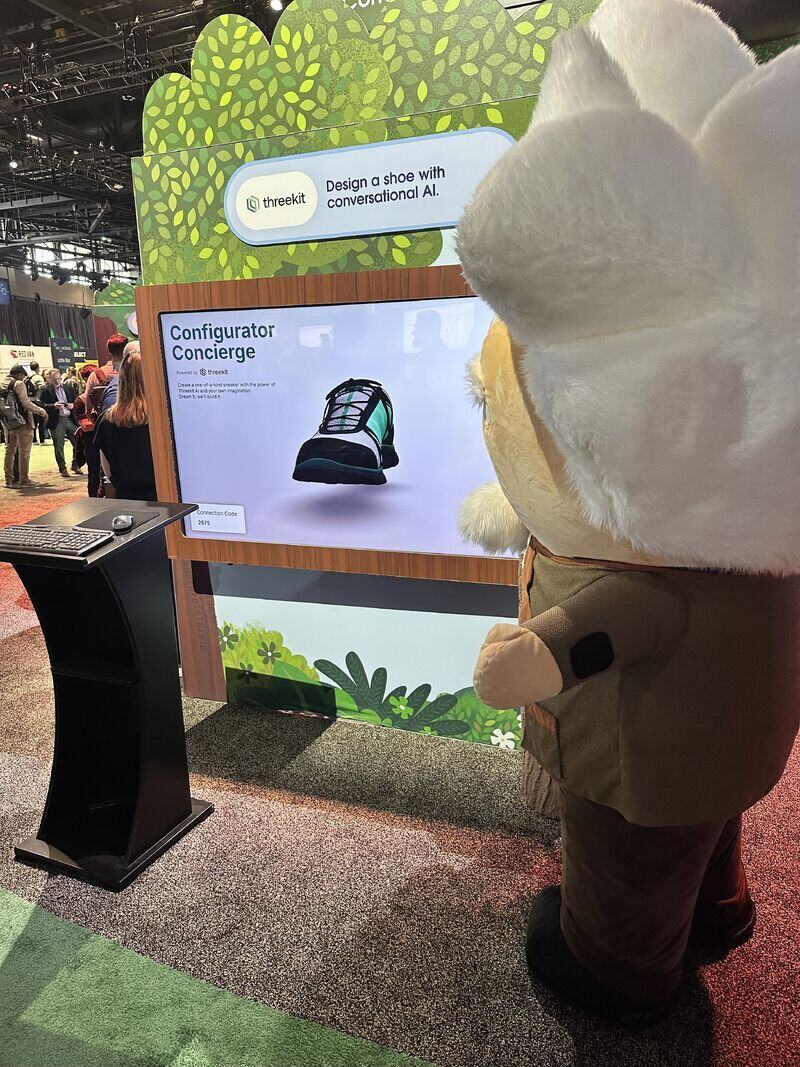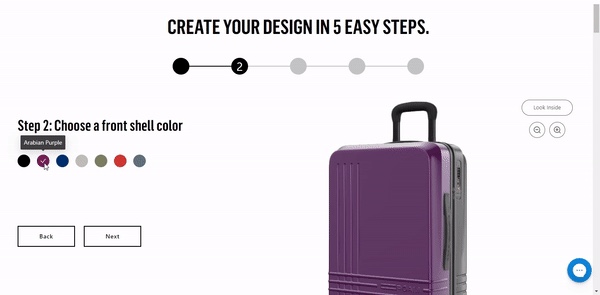How AI Product Discovery Reduces Cart Abandonment
Summary / TL;DR
-
AI product discovery reduces cart abandonment by 20-30% by eliminating zero-result searches and improving product relevance.
-
Better search results directly improve conversions, with companies seeing 150-300% increases in search-to-purchase rates.
-
Real-time inventory integration prevents checkout disappointment by showing availability and delivery times upfront.
-
Personalized product recommendations build customer confidence, reducing cognitive load and purchase hesitation.
The Hidden Cost of Poor Product Discovery
Cart abandonment represents one of the most significant revenue leaks in eCommerce, with average abandonment rates around 70% (source) across industries. One overlooked factor is poor product discovery, specifically the frustrating experience of not finding the right products.
Cart abandonment AI solutions focus on understanding why customers leave without purchasing and proactively addressing these issues before they become problems. The connection between product discovery benefits and reduced abandonment rates is clear. When customers can easily find products that match their needs, they're far more likely to complete their purchases.
Understanding the Root Causes of Cart Abandonment
The "No Results" Problem
One of the most significant contributors to cart abandonment is the dreaded "no results found" page. When customers can't find what they're looking for, they don't just leave empty-handed. They often abandon items they've already added to their cart out of frustration or uncertainty.
Impact of poor search results:
- 68% of online shoppers will leave a site because of poor search experiences.1
- 52% of consumers abandon their entire cart and go elsewhere if there's at least one item they can't find. Search abandonment impacts retail sales and brand loyalty.2
- Average mobile session duration drops to 72 seconds (compared to 150 seconds on desktop) after poor experiences.3
- Customer lifetime value can be 600-1,400% lower for customers who have poor experiences compared to satisfied customers.4
Beyond Zero Results: The Irrelevant Results Challenge

Even when searches return results, irrelevant or poorly matched products create doubt and confusion. Customers who don't trust the search system's ability to understand their needs become hesitant to commit to any purchase, leading to cart abandonment.
Signs of poor product matching:
- High bounce rates on product pages from search results
- Low click-through rates on recommended products
- Frequent use of filters to refine results
- High return rates on purchased items
How AI Product Discovery Transforms the Shopping Experience
Intelligent Query Understanding
Modern cart abandonment AI systems use advanced natural language processing (NLP) to understand customer intent, even when their queries are vague, misspelled, or use non-technical language. This reduces the likelihood of zero-result searches that frustrate customers and lead to cart or shopping abandonment.
Types of query processing improvements with AI:
- Spell correction and autocomplete - Handles typos and incomplete queries
- Synonym recognition - Understands alternative terminology and industry jargon
- Intent inference - Determines what customers actually want to accomplish
- Contextual search - Uses browsing history and customer data for better results
Proactive Problem Prevention
Rather than waiting for customers to encounter problems, AI systems can predict and prevent issues that typically lead to cart abandonment. Examples of this proactive problem solving might include:
- Suggesting alternatives when specific items are out of stock
- Recommending complementary products before checkout
- Identifying compatibility issues between cart items
- Flagging potential shipping or availability concerns
The Science Behind Improving eCommerce Search and Conversion
Reducing Cognitive Load Through Better Discovery
Cart abandonment often occurs when customers feel overwhelmed by choices or uncertain about their decisions. AI product discovery can help reduce this cognitive burden by giving customers relevant options in a format that's easy to understand.
Cognitive load reduction strategies:
- Progressive disclosure of product information
- Automatic filtering based on customer preferences
- Visual comparison tools for similar products
- Clear categorization and product relationships
Building Confidence Through Relevance
When customers trust that the system understands their needs, they become more confident in their purchasing decisions. This confidence directly translates to lower abandonment rates and higher conversion values.
How AI helps increase buyer confidence when shopping online:
- Showing relevant search results that match customer intent
- Explaining why certain products are being recommended
- Giving an easy comparison between similar options
- Providing transparent pricing and availability information
Quantifying Product Discovery Benefits
Direct Impact on Cart Abandonment Rates
Organizations using AI-powered product discovery typically see improvements in cart abandonment metrics. In fact, some of these increases are quite substantial!
Revenue Impact Calculations
Did you know that cart abandonments cost retailers an estimated $18 billion per year? Yikes! So, you can see how financial benefits of reducing cart abandonment through improved product discovery would be substantial.
Here's an example scenario for a $10M annual revenue company:
- Current cart abandonment rate: 70%
- AI improvement: 20% reduction (to 56%)
- Additional completed purchases: 14% of total traffic
- Revenue increase: $1.4M annually (14% of $10M)
- ROI on AI discovery investment: Typically 300-500% in first year
Psst... We've got more good news about how AI improves sales!
AI Technologies That Improve eCommerce Search
Machine Learning Algorithms for Better Matching

Advanced machine learning (ML) models analyze customer behavior, product attributes, and successful purchase patterns to continuously improve search relevance. This is often brought to life through chatbots or some other interactive shopping experience. Regardless of deployment, there are some common themes amongst approaching ML:
- Collaborative filtering - "Customers who bought this also bought"
- Content-based filtering - Matching product features to customer preferences
- Hybrid models - Combining multiple approaches for optimal results
- Deep learning - Processing complex, multi-dimensional customer data
Real-Time Personalization
AI systems can adapt search results and product recommendations in real-time based on customer behavior within the current session.
For example, AI can reference browsing patterns and time spent on categories to refine product results, or even take into account previous purchase history and preferences. Or, if your brand offers seasonal products, AI can incorporate seasonal shopping patterns!
This real-time personalization is a game-changer for shoppers who are looking for a tailored online shopping experience.
Dynamic Inventory Integration
One significant cause of cart abandonment is customers discovering at checkout that desired items are out of stock or have long delivery times. AI product discovery systems integrate with inventory management and PIMs to prevent this type of frustration.
For example, AI product discovery can pre-filter products based on what's currently in stock, offer alternatives for out-of-stock items, or show backorder or pre-order options when relevant.
We've also found that shoppers love how AI can give delivery time estimates that are integrated right into the search results, which can help shoppers narrow down options if they're on a time crunch.

Implementation Strategies for Reducing Cart Abandonment with AI
Phase 1: Search Result Optimization
Start by improving the basic search experience to eliminate the most common causes of abandonment.
Initial improvements might include:
- Implement intelligent query processing and spell correction
- Add synonym recognition for industry-specific terminology
- Create robust filtering and faceting options
- Ensure mobile-optimized search interfaces
Phase 2: Personalization and Recommendations
Build on improved search with personalized experiences that guide customers toward relevant products.
Personalization enhancements you could try:
- Behavior-based product recommendations
- Personalized search result rankings
- Dynamic homepage and category page content
- Abandoned cart recovery with improved suggestions
Phase 3: Advanced AI Integration
Implement sophisticated AI capabilities that proactively prevent abandonment.
Advanced features we love:
- Predictive product suggestions based on intent signals
- Real-time inventory optimization in search results
- Cross-sell and upsell recommendations during shopping
- Intelligent bundling and package suggestions
Measuring Success: KPIs for Cart Abandonment AI
Essential Metrics to Track
Monitor these key performance indicators to measure the impact of AI product discovery on cart abandonment.
Primary metrics that show direct results of integrating AI product discovery:
- Cart abandonment rate (overall and by customer segment)
- Zero-result search rate and recovery actions
- Search-to-cart conversion rate
- Cart-to-purchase conversion rate
- Average time between cart addition and abandonment
Secondary metrics that help demonstrate impact:
- Customer satisfaction scores related to product finding
- Return rates on AI-recommended products
- Revenue per visitor and per session
- Customer lifetime value improvements
AI Provides Advanced Analytics for Optimization

In platforms like Threekit, you can use sophisticated analytics to continuously improve your cart abandonment AI. These types of analyses help examine customer behavior patterns, predictive modeling around abandonment risk, lead and revenue reporting, A/B testing and more.
Industry-Specific Applications
B2B Manufacturing Considerations
With complex product offerings, B2B manufacturers face unique challenges that AI product discovery can help address.
AI features that can benefit B2B manufacturers:
- Complex specification matching for technical products
- Integration with ERP systems for real-time pricing and availability
- Account-specific catalog and pricing personalization
- Bulk ordering and contract pricing optimization
Retail and Consumer Goods

Consumer-focused retailers can leverage AI discovery in different ways to improve the customer shopping experience.
B2C optimization strategies:
- Visual search integration for fashion and home goods
- Seasonal and trend-based recommendation adjustments
- Social proof integration in product discovery
- Gift and occasion-based product bundling
The Future of Cart Abandonment Prevention
Emerging Technologies
Next-generation cart abandonment AI will incorporate even more sophisticated capabilities. While the possibilities are endless, we think that near future solutions to the 'cart abandonment problem' will include some combination of:
- Emotion recognition - Detecting frustration through user behavior patterns
- Predictive abandonment alerts - Proactive intervention before customers leave
- Voice-activated shopping - Natural language product discovery and ordering
- Augmented reality integration - Virtual product trials to increase confidence
Omnichannel Integration

Future AI systems will seamlessly connect online and offline experiences to prevent abandonment. This is often referred to as omnichannel integration, as it transcends device and setting to ensure a continuous shopping experience for buyers. This is already happening, but we anticipate this experience to improve in its capabilities and features moving forward.
For example, let's say that a shopper begins their journey on their mobile device, but isn't quite ready to buy. They encounter product ads and additional product discovery features across all channels that eventually help them return to their online shopping experience. Once they decide to purchase an item, they choose the in-store pickup option, where their buyer journey is complete.
Repeat customers can be nurtured by future AI product discovery recommendations based on the customer's online browsing behaviors and past carts.
Best Practices for Implementation
Technical Requirements
Successful cart abandonment AI implementation requires solid technical foundations. We wrote a whole guide on what types of assets and data you need to start integrating AI product visualization, but here's a few tips to help get your technical requirements in order.
Tech infrastructure needs:
- Real-time data processing capabilities
- Integration with existing eCommerce and inventory systems
- Scalable cloud-based AI processing
- Robust analytics and reporting platforms
Organizational Readiness
Beyond technology, successful implementation requires organizational alignment. Adopting AI can be a hurdle for even the most sophisticated manufacturer or retailer! We've observed that the biggest factors that help companies succeed when trying to adopt and integrate AI into sales workflows are:
- Executive commitment to customer experience improvement
- Cross-functional collaboration between IT, marketing, and sales
- Customer service team training on new capabilities
- Continuous optimization mindset and resources
ROI and Business Case Development
Building the Financial Justification
When developing a business case for cart abandonment AI, consider both immediate and long-term benefits.
Immediate benefits:
- Reduced cart abandonment rates and increased conversions
- Higher average order values through better product matching
- Decreased customer service costs through self-service improvements
Long-term advantages:
- Improved customer loyalty and retention
- Enhanced brand reputation for superior user experience
- Valuable customer insights for product development and marketing
- Competitive differentiation in crowded markets
General Timeline and Milestones for Implementing AI Product Discovery
Plan for a phased approach that delivers incremental value, we've seen the following schedule work for clients. Tackling implementation in phases helps ensure things keep moving along without overwhelming internal teams. Here's our recommendation for timing:
- Months 1-2: System integration and basic search improvements
- Months 3-4: Personalization and recommendation engine deployment
- Months 5-6: Advanced AI features and optimization
- Ongoing: Continuous learning and improvement cycles
The Strategic Importance of AI Product Discovery
Cart abandonment represents lost revenue, but more importantly, it represents lost customer relationships. Every abandoned cart is a signal that your product discovery system has failed to connect a customer with their ideal solution. Cart abandonment AI addresses this challenge by creating more intelligent, responsive, and helpful shopping experiences.
The product discovery benefits extend far beyond just reducing abandonment rates. By helping customers find exactly what they need, when they need it, AI-powered discovery creates the foundation for long-term customer relationships built on trust and satisfaction.
Organizations that improve eCommerce search through AI don't just see better conversion rates. They create competitive advantages that compound over time. As customers come to expect intelligent, personalized shopping experiences, the ability to deliver relevant product discovery becomes essential for survival in competitive markets.
The question isn't whether to implement cart abandonment AI, it's how quickly you can deploy these capabilities to start recovering lost revenue and building stronger customer relationships. The technology exists, the benefits are proven, and the competitive pressure is mounting. The time to integrate AI is now.
Notes
1The Silent Killer of Ecommerce Sales: Search Abandonment



